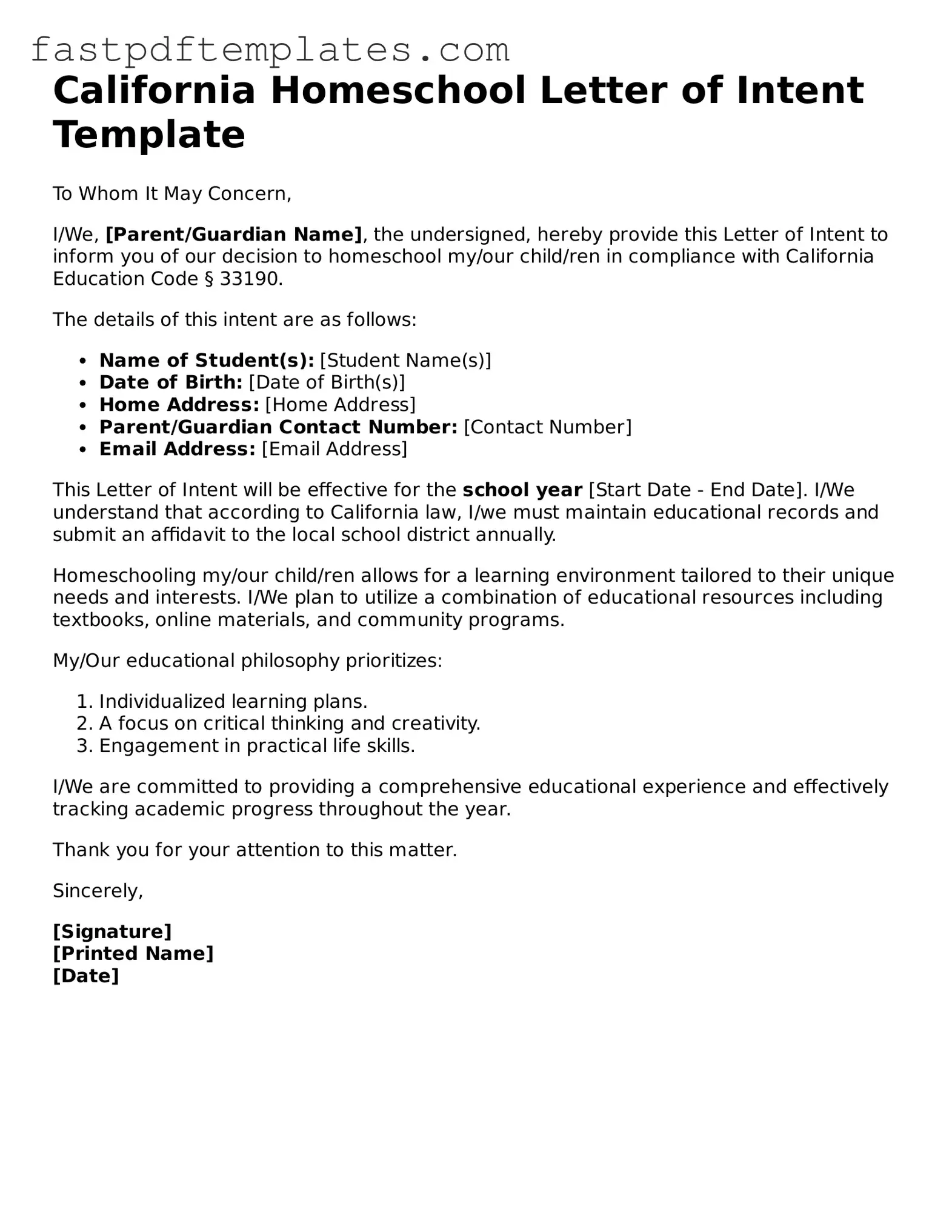California Homeschool Letter of Intent Template
To Whom It May Concern,
I/We, [Parent/Guardian Name], the undersigned, hereby provide this Letter of Intent to inform you of our decision to homeschool my/our child/ren in compliance with California Education Code § 33190.
The details of this intent are as follows:
- Name of Student(s): [Student Name(s)]
- Date of Birth: [Date of Birth(s)]
- Home Address: [Home Address]
- Parent/Guardian Contact Number: [Contact Number]
- Email Address: [Email Address]
This Letter of Intent will be effective for the school year [Start Date - End Date]. I/We understand that according to California law, I/we must maintain educational records and submit an affidavit to the local school district annually.
Homeschooling my/our child/ren allows for a learning environment tailored to their unique needs and interests. I/We plan to utilize a combination of educational resources including textbooks, online materials, and community programs.
My/Our educational philosophy prioritizes:
- Individualized learning plans.
- A focus on critical thinking and creativity.
- Engagement in practical life skills.
I/We are committed to providing a comprehensive educational experience and effectively tracking academic progress throughout the year.
Thank you for your attention to this matter.
Sincerely,
[Signature]
[Printed Name]
[Date]
